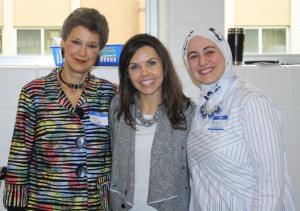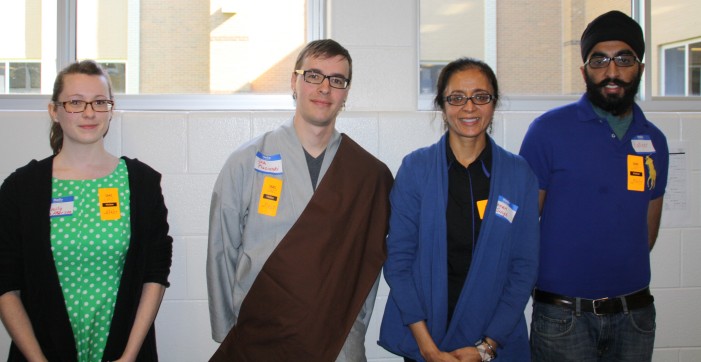BY JESSICA STEELEY
Clarkston News Staff Writer

Sashabaw Middle School (SMS) seventh graders learned about religious diversity from worshipers of six different religions during their world religion unit.
The Interfaith Leadership Council paired with seventh grade classes to bring in speakers from the three Abrahamic religions and three of the world’s eastern religions. They discussed their scriptures, holidays, beliefs and practices.
“We do lots of panels and interfaith educational events, but we haven’t brought it into the schools yet. This is our kick-off trial to see how it goes,” Interfaith Leadership Council Program Director Meredith Skowronski said.
For many years, SMS has paired with the council to do religious diversity journeys, but only 25 students are able to go on them, said World History Teacher Sue Wilson.
“They spend a whole day at these houses of worship just eating traditional food, asking questions, learning from the religious leaders, interacting with members of the community, just as a way to immerse them in a faith,” Skowronski said. Wilson wanted more students to be given this chance so she contacted Skowronski about bringing speakers in as part of project based learning to teach kids about world religions.
The six religions presented were Christianity, Islam, Judaism, Buddhism, Hinduism, and Sikhism, which were also taught in the students’ world history classes, Wilson said.
“I think it’s important kids are exposed to different religions and have a better understanding of it so they can speak more intelligently about it,” she said.
Seventh grader Abby Nellis said the focus of the journeys and presentations was to understand different religions and how they work.
“If you see somebody walking around with a turban or walking around with a head covering, it’s okay to ask questions,” Nellis said. “If you have background knowledge, you don’t have to automatically just jump to conclusions.”
Student Faith Kroll said she learned all the religions believe in treating everyone equally and helping people.
“It’s important because you need to learn how other people feel and how they see things, not just how you see it,” Kroll said.
Skowronski thinks there’s a lot of misunderstandings among different faiths and allowing young students to experience members of other faiths helps break barriers and stereotypes.
“What we do really is try to spread interfaith education and conciliation,” Skowronski said. “We try to teach people about other faiths, we try to teach faiths about themselves and provide resources.”
Emily Walters went on the religious diversity journeys and said the presentations helped clarify questions she had about the different religions.
“Nowadays, especially in the U.S., we are such a diverse population,” Walters said. “We need to be able to be open to other people and know about what they might believe in.”

